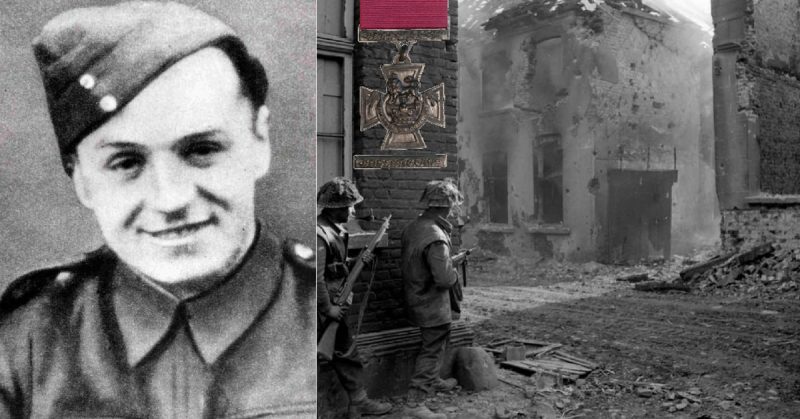Private James Stokes’ thirtieth birthday was February 6th, 1945. On the 1st of March, less than one month later, he came to the end of his life.
James Stokes was born in Glasgow, Scotland, near the Clyde River around which Scotland’s biggest city stretches. He was brought up in the area known as the Gorbals. This area has been notorious throughout the city’s history, and conditions there after World War One, when Stokes was a boy, would have been hard. But for the poor, busy, multicultural community in the Gorbals in the 1920s and 30s, there was also a sense of togetherness, dignity and mutual respect that can be easy to forget. Life was hard, but life was not bad, and there was still a powerful affection for home and community in Stokes as he advanced with his companions, mile after muddy mile, toward Germany.
Life was hard, but life was not bad, and there was still a powerful affection for home and community in Stokes as he advanced with his companions, mile after muddy mile, toward Germany.
The army had been progressing toward the Rhine for months. The conditions were poor, sustenance was limited, but by this time everyone was used to it, and nobody complained. It was the end of winter, and the Allies could feel the approaching victory.
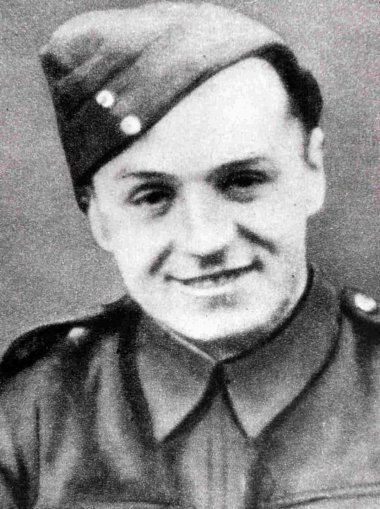
James Stokes had landed in France on the 6th of June 1944, a private with the 2nd Battalion of the King’s Shropshire Light Infantry. The King’s Shropshires were part of the 3rd division of the United Kingdom army, and, like the rest of the division, they had taken heavy losses on the day of the landing. After consolidation, the advance had begun. Steadily the 3rd Division moved south and east, part of the long undulating line that made up the Allied front.
And they had fought. In the ruins of the City of Caen, at Manneville, at the crossing of the river Seine, they had fought. The losses had been heavy, but the advance continued. By the time they reached Kervenheim, there were no strangers to battle, loss, and hardship in James Stokes’ small Platoon.
In peacetime, the town of Kervenheim in the Rhineland would have barely been visible on a map, but in this, the last great Allied push in the Northern European theater, it became a strategic position of immense importance. The Wehrmacht was under direct orders from the Nazi High Command. No surrender of ground, no matter what the cost. This had made for slow and difficult progress against determined resistance, but progress they did, nonetheless. Belgium was behind them, and they were approaching the river Rhine.
When they reached the area outside Kervenheim, the Allied forces had already been massing for the assault for some days. The supply lines were stretched thin, and the many hundreds of tons of goods that were required daily at the front had to travel all the way from the port at Normandy to their destinations.
Supplies arrived, all the same, and when the Shropshires ended their march on the 28th of February, 1945, they found the huge vast of the Allied army’s infrastructure already in operation. The artillery was pounding the nearby town. There were columns of men and vehicles moving everywhere. There was digging of ditches and pitching of tents, the smells of fuel exhaust and of cooking food. They rested.
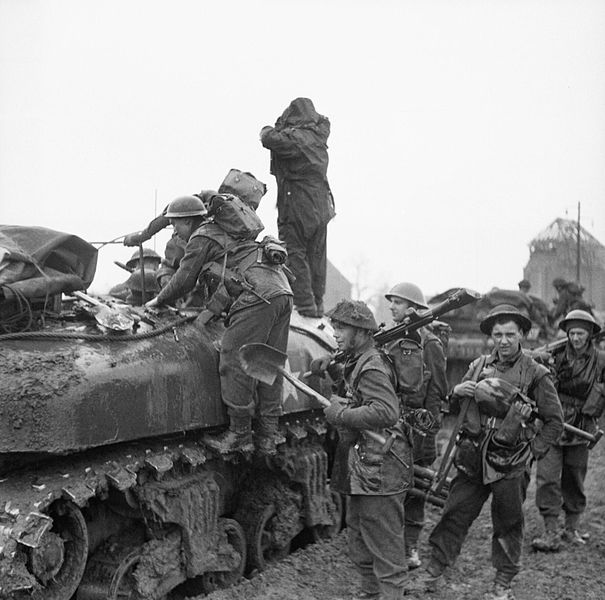
In the morning of the 1st of March, the attack began.
Private Stokes’ platoon moved in good order toward the outlying farms of the town, but their advance was soon halted by a cacophony of machine gun and rifle fire from a building which loomed out of the smoke in front of them. Men of the Platoon fell, silent in death or crying out in pain. The order rang out through the racket and the Platoon sought cover. The storm of bullets continued over their heads.
Some men, including Stokes, returned an ineffective volley through the haze. The Platoon commander was having a shouted conversation with his lieutenant, who was stabbing at a crumpled, filthy map with one black fingernail. Without warning an explosion rocked the ground only yards away, and they both cringed instinctively, grabbing at their helmets.
Stokes took a breath and assessed the situation. The building was not far ahead, a solid, two storied structure of grey stone. Its windows were gone, and the doorway showed black behind the ruins of a kitchen garden. He watched for a moment, noting which windows the irregular flashes of rifle fire came from, and where more regular bursts indicated the position of at least one machine gun.
Further away and to the left he could see another smaller building, and further still, their objective: a larger group of buildings hard to make out at this distance. He thought he could see small figures there, scurrying to prepare for the onslaught.
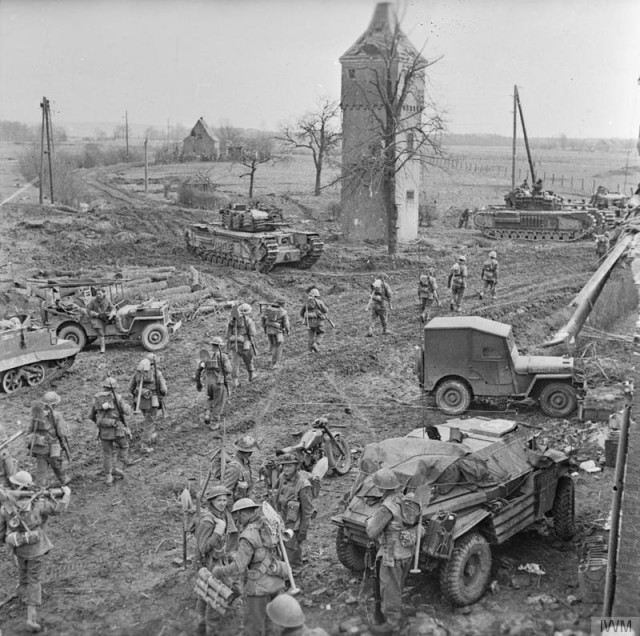
He looked at his commanding officer, who now began to give orders to reform the platoon. In the eyes of the men around him, he could see what would happen next. The platoon would advance into the teeth of the suppressing fire, relying on force of numbers to cross the ground and enter the building.
Many would be lost in the advance, and then the building would be taken in a costly, vicious hand-to-hand fight. They might take the first building, and maybe even the second in this way, but the final objective would be near impossible to reach. His platoon would probably clear the way for another unit, but it would mean the end of the war for most of them.
The Platoon Commander swore in disbelief as, from the corner of his eye, he saw one of his men leap from cover and begin to zig-zag toward the occupied building ahead of them. He cried out a question – “Stokes!” came the reply. “It’s Jim Stokes!”
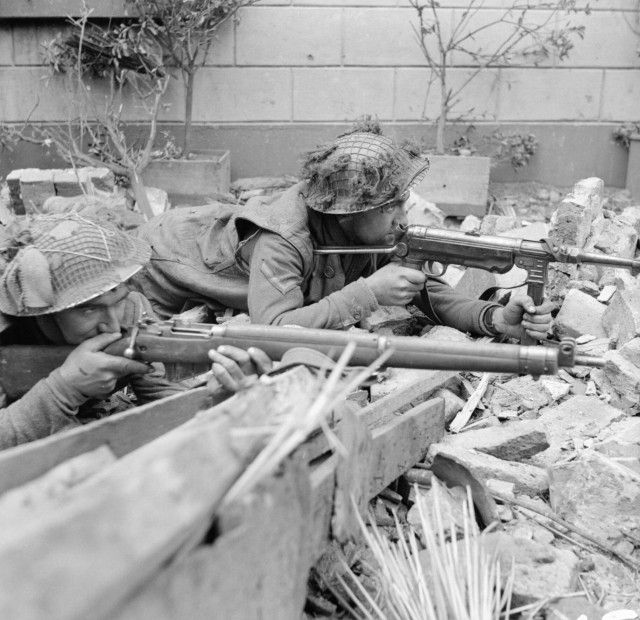
So it was. The little Scotsman was crouched over as he dashed away from his Platoon. He held his Enfield at his side, but he was firing as he ran. The rifle held a ten round magazine, and the commander counted in mingled horror and admiration as he saw Stokes empty the magazine, timing his shots so that he fired off the tenth round right through the doorway before crouching down beside the black opening. He saw Stokes change his magazine with incredible swiftness. There was the glint of steel as the Private drew his fighting knife from his belt. Then he disappeared inside.
The Shropshires watched from their covered positions. The hail of bullets from the farm building faltered, then stopped altogether. There was a long, breathless moment of relative silence. Then a figure appeared in the dark doorway, then another, and another. A small knot of the enemy stumbled from the building, their helmets gone and their hands in the air. Behind them, wielding his bayonet came Stokes, and he ran, driving his prisoners toward the Shropshires’ position.
The platoon commander gave the order to advance, and the King’s Shropshires poured forward and gathered around Stokes, securing the prisoners and slapping the young man on the back. He was bleeding from an ugly cut on his neck, and his jacket was torn. The Platoon Commander glanced at the wound and clapped Stokes on the shoulder.
“That was well done, lad!” he said. “Now, off to the medic post with you and get that seen to. You’ve done enough for today.”
Around them, the Platoon was already advancing toward the second building.
“I’ll be alright, sir,” said Stokes, turning away. His eyes were smoldering as he gazed toward the second building.
The Commander took a breath to protest, but Stokes was moving, eyes fixed on his next target. The Private began to gather speed, and all at once the roar of gunfire was all around the commander. His men dived for cover and began to return fire, but Stokes kept running.
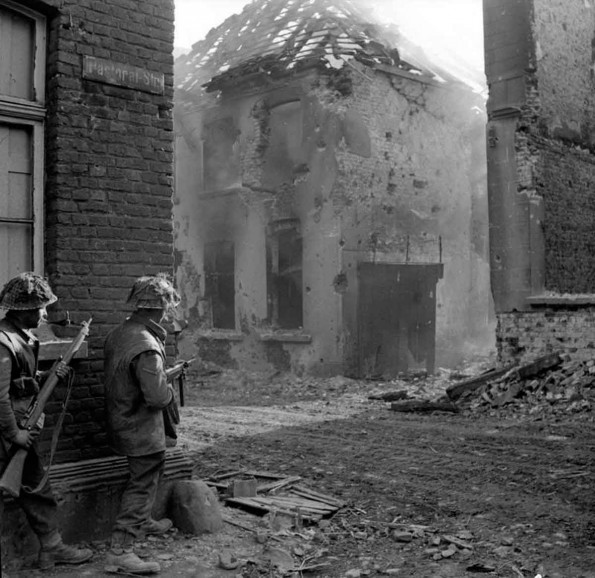
“He’s off again!” someone shouted.
Halfway to the house, Stokes fell. All around him, bullets threw up clods of earth where they struck the ground. The shooting from the occupied house was so intense that the Platoon Commander could barely see through the haze of smoke, bullets and flying mud. He drew a breath to order the advance, but then choked back his cry as Stokes leaped up again.
The Shropshires watched in disbelief as Private Stokes picked up his rifle and continued his charge. Again, he disappeared inside the building. Again, the thunder of suppressing fire faltered and stopped, and again Stokes reappeared, preceded by a small group of stumbling, terrified prisoners.
The fortified group of buildings that made up the Platoon’s objective could now clearly be seen. The prisoners were secured, and the commander moved toward Stokes, intending to send him back away from the line, but the private was now dashing across the sixty yards of ground toward the main objective. Behind him, the Shropshires let out a roar as they charged.
James Stokes fell twenty yards from his objective and did not get up again. As his unit surged around him toward their victory he raised his hand in farewell.
“Goodbye, lads,” He shouted in a loud voice. “Goodbye!”
It was found that he had been wounded eight times in the upper part of the body and he is buried at the Reichswald Forest War Cemetery, near Kleve.
His magnificent courage, devotion to duty, and splendid example inspired all around him, and ensured the success of the attack at a critical moment; moreover, his self-sacrifice saved his Platoon and Company heavy casualties and he was awarded the Victoria Cross.
